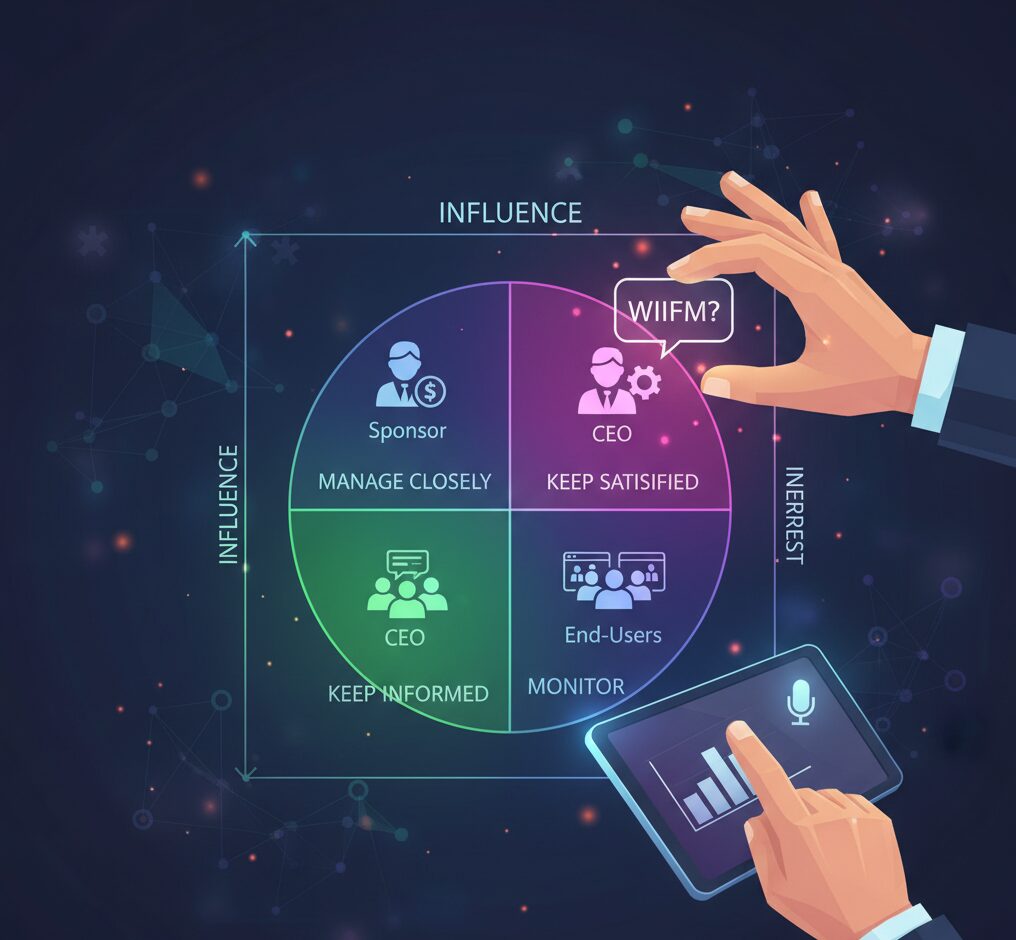As project managers, we are masters of Gantt charts, project plans, and timelines. We can track a dependency across three different teams and six sprints. But the most critical element of any project isn’t a task or a milestone; it’s the people.
In project management, your “audience” is a broad term. It includes your project sponsor, your key stakeholders, your end-users, the executive leadership team, and even your own project team. Each of these groups has different needs, motivations, and definitions of “success.”
Failing to understand your audience is the root cause of countless project failures. It leads to misaligned expectations, poor adoption, scope creep, and team burnout. You might deliver the project “on time and on budget,” but if it doesn’t solve the right problem for the right people, did it really succeed?
Understanding your audience is the secret to moving from a “task manager” to a “project leader.” Here are five tips to help you master this essential skill.
1. Identify Everyone in the “Theater”
You can’t understand an audience you don’t know exists. Your first step is to map everyone who is touched by, has an interest in, or can influence your project. Go beyond the obvious.
- Sponsor/Client: The person funding the project. (Obvious)
- End-Users: The people who will actually use the product or service. (Often missed)
- Project Team: The people building the project. (Their buy-in is critical)
- Steering Committee: The leadership group overseeing the project.
- Support Teams: Who has to support this post-launch? (e.g., IT help desk, customer service)
- Legal/Compliance: The teams that can stop your project cold if you ignore them.
Create a simple Stakeholder Register and review it often. You’ll be surprised who you forgot on the first pass.
2. Analyze Their Interest and Influence
Once you know who they are, you need to understand their relationship to the project. The classic tool here is the Stakeholder Matrix, which plots individuals on two axes: Interest (how much they care) and Influence (how much power they have to change or stop the project).
This matrix tells you exactly how to manage your communication:
- High Influence, High Interest: (e.g., Project Sponsor) Manage them closely. Involve them, consult them, and communicate with them constantly.
- High Influence, Low Interest: (e.g., CEO, Head of IT) Keep them satisfied, but don’t overwhelm them with details. Give them executive summaries.
- Low Influence, High Interest: (e.g., End-Users) Keep them informed. They are your best source of feedback and can become your biggest champions.
- Low Influence, Low Interest: (e.g., Other departments) Monitor them, but don’t spend too much energy here. A quarterly update might be enough.
3. Find Their “WIIFM” (What’s In It For Me?)
Every single person in your audience is listening to you through a single filter: “What’s In It For Me?” (WIIFM). If your communication doesn’t answer this question, it will be ignored.
To find their WIIFM, ask yourself:
- What are their goals?
- What are their biggest pain points?
- How does my project help them achieve their goals or remove their pain?
- What are they afraid this project will do? (e.g., “Will this new software make my job obsolete?”)
- How do they define success? (It’s almost always different from your definition!)
When you can frame your project updates in terms of their WIIFM, you stop being a “status reporter” and start being a “trusted partner.”
4. Tailor the Message, Medium, and Cadence
A common mistake is “one-size-fits-all” communication. Sending the 10-page technical status report to your executive sponsor is a fast way to get your emails ignored.
Based on your WIIFM and stakeholder analysis, tailor your communication:
- The Message: Your sponsor wants to know about Budget, Scope, and Risk. Your technical team needs to know about specific dependencies and deadlines. Your end-users want to know “When can I use it?” and “How will it work?”
- The Medium: Does this person prefer a formal email, a quick chat message, a live 10-minute demo, or a dashboard? Using the wrong medium is like speaking the wrong language.
- The Cadence: Your project team might need a daily stand-up. Your steering committee needs a monthly meeting. Your end-users might just need an update at key milestones.
Never force your audience to work to find the information they need. Bring it to them in the format and frequency they prefer.
5. Listen More Than You Talk (And Be Ready to Adapt)
Finally, understanding your audience is not a “set it and forget it” task you do at kickoff. It’s a continuous process of listening, seeking feedback, and adapting.
Create formal and informal channels for feedback. This includes:
- Retrospectives with your team.
- One-on-one check-ins with key stakeholders.
- User-acceptance testing (UAT) and demo sessions with end-users.
- “Office hours” where anyone can come and ask questions.
When you receive feedback—especially negative feedback—your first job is to listen and understand, not to defend. This feedback is a gift. It’s an early warning sign that your project is drifting away from your audience’s needs.
Conclusion
Ultimately, your audience holds the keys to your project’s success. By investing time to identify, analyze, and communicate with them on their terms, you mitigate risks, build trust, and create a broad coalition of champions. A great project manager knows that projects are, and always will be, all about people.

